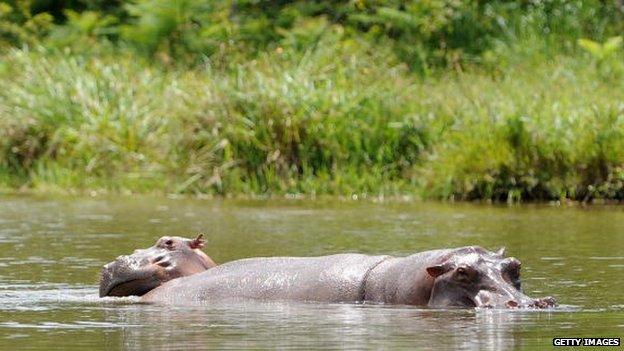Pablo Escobar: Why scientists want to kill Colombia's hippos
- Published

The hippos brought by Pablo Escobar to his private zoo have multiplied and invaded Colombia's waterways
Pablo Escobar is a name Colombia has been trying to forget for the last 30 years.
One of the most notorious criminals of all time, he was the founder of the infamous Medellín drugs cartel in the 1980s, responsible for kidnappings, bombings and indiscriminate assassinations. At one point he was thought to be one of the world's richest men.
But the cocaine kingpin is also responsible for what scientists call an ecological time-bomb.
A group of hippos originally imported by Escobar to his private zoo decades ago has multiplied and, according to scientists, is now spreading through one of the country's main waterways - the River Magdalena. Last month, a study published in the Biological Conservation journal said culling the animals was the only way to mitigate their environmental impact.
"It is obvious that we feel sorry for these animals, but as scientists we need to be honest," Colombian biologist Nataly Castelblanco, one of the study's authors, told the BBC. "Hippos are an invasive species in Colombia and if we do not kill a part of their population now, the situation could be out of control in just 10 or 20 years."
The rise of the so-called "cocaine hippos" began in 1993 after authorities killed Pablo Escobar and seized his luxury estate Hacienda Napoles, about 250km (155 miles) north-west of the capital Bogotá.
Animals found there were distributed to zoos across the country, but not the hippos. "It was logistically difficult to move them around, so the authorities just left them there, probably thinking the animals would die," Ms Castelblanco said.
Instead, they thrived.
Over the years, scientists have tried to calculate how many hippos are living in Colombia's waterways, with estimates ranging from 80 to 120 animals. "It is the biggest hippo herd outside Africa, which is their native region," veterinarian and conservationist Carlos Valderrama told the BBC.
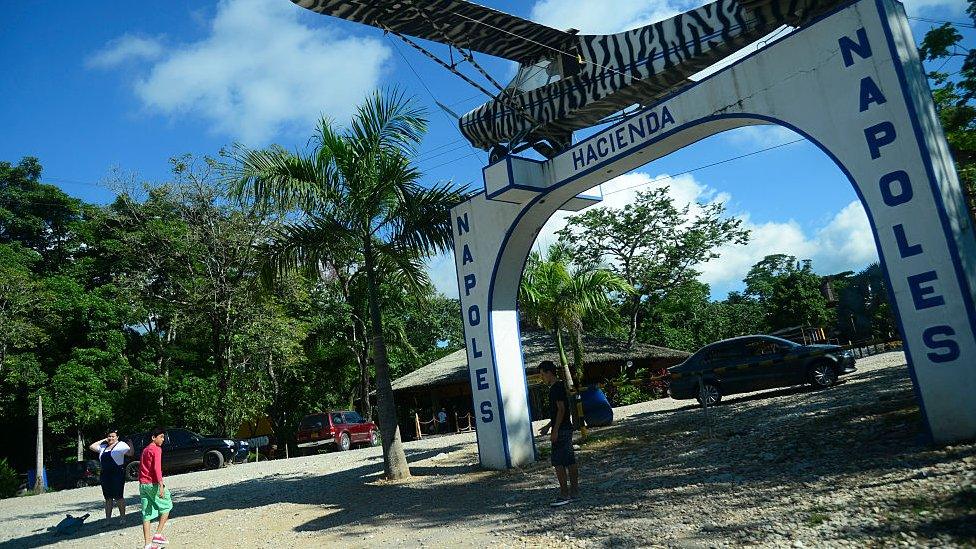
Hacienda Napoles was once Pablo Escobar's luxury estate, and is now a theme park
Numbers are projected to only get bigger. Ms Castelblanco and her peers say the population will reach over 1,400 specimens as early as 2034 without a cull - all of them descended from the original group of a male and three females. In the study, they envisaged an ideal scenario in which 30 animals need to be culled or castrated every year to stop that happening.
Ms Castelblanco explains that the "cocaine hippos" have seized an evolutionary opportunity. They do not have natural predators in South America, meaning they can reproduce much more easily.
The weather also helps: in Africa, the population is in part controlled by droughts that do not take place in Colombia. Indeed, conditions in their South American home seem so ideal for the hippos that studies show they start reproducing at earlier ages, she said.
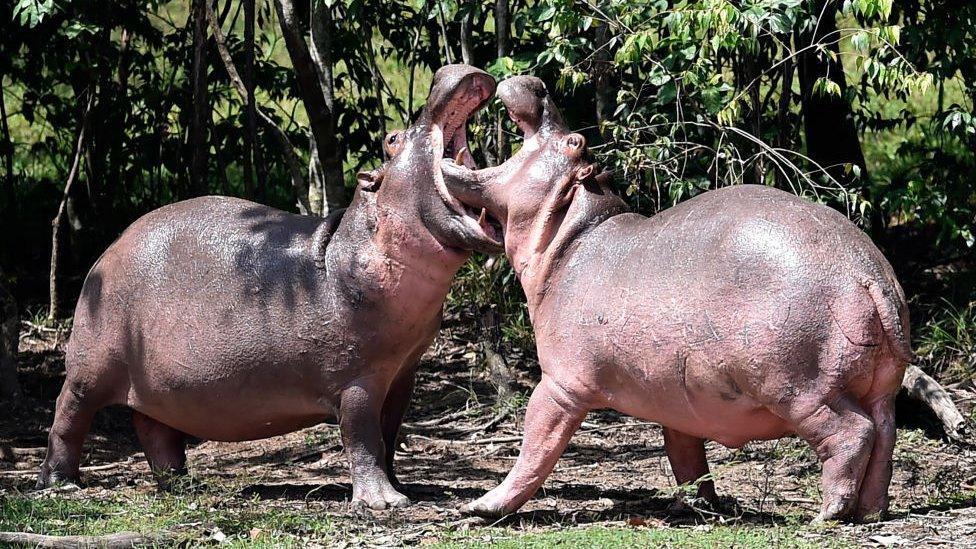
Scientists believe that the hippo population could reach over 1,400 in a decade without a cull
Scientists studying the hippos' environmental impact believe they could affect the local ecosystem in a number of ways: from displacing native species already under threat of extinction, like the manatee, to altering the chemical compositions of waterways, which could endanger fisheries - though other studies suggest they might help the environment too, external.
"The hippos are spreading across Colombia's biggest river basin, from which many thousands of people make their living," the biologist said. "There have been sightings of hippos as far as 370km from Hacienda Napoles."
'It's like being in a Jurassic Park movie'
This is not the first group of scientists to call for a cull. But some experts oppose the idea. Enrique Ordoñez, a biologist at Colombia's National University, said the "cocaine hippos" offered hope to preserve global hippo numbers. They are considered a vulnerable species by NGOs such as the International Union for Conservation of Nature (IUCN).
A sterilisation program would be a better way to control their population, he told CNN.
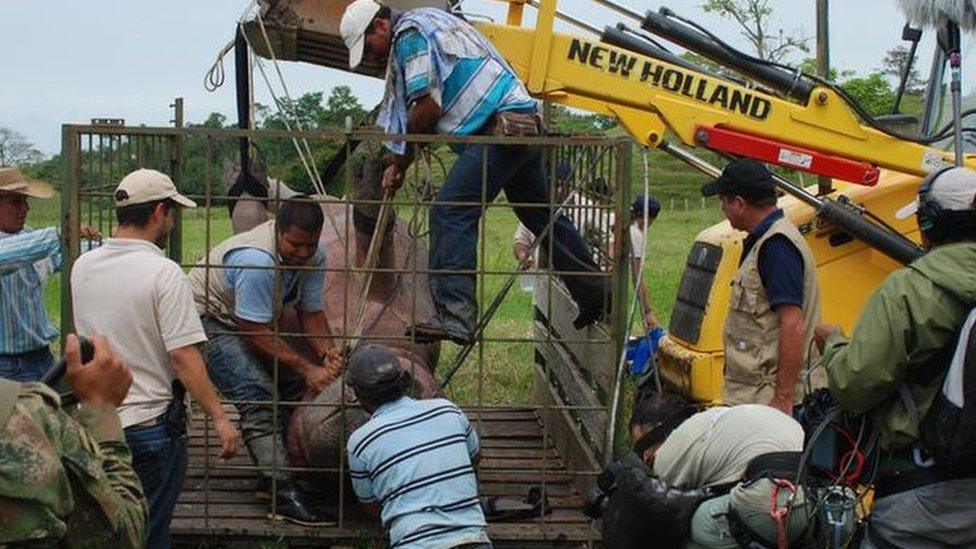
Hippo castrations are a dangerous and logistically complicated exercise, experts say
But such procedures are far from simple - or cheap - and Carlos Valderrama has experience of this. In 2009, he performed a castration of a male "cocaine hippo" as part of an experiment to study options to control the growing population.
"We are talking about an animal that can weigh five tonnes and be very aggressive," Mr Valderrama said. "Even though we had sedated the animal, it almost tipped the crane we were using to help with the procedure. It was like being with a dinosaur in a Jurassic Park movie."
The veterinarian said the main lesson of the experiment was that castration alone was simply not an option - especially considering the $50,000 (£36,000) bill. Official government statistics show only four animals underwent sterilisation between 2011 and 2019.
"Many of these hippos live in the wild. It is simply not possible to reach all of them easily. Meanwhile, they will keep on reproducing," Mr Valderrama said.
Polarising issue
So what is stopping the authorities from taking more drastic action? The short answer: public opinion. After Colombian media reported on the study, biologist Nataly Castelblanco started receiving abuse and death threats.
"Some people in Colombia can get very angry when they talk about the hippos," she said. "People tend to understand much more about invasive species when we talk about plants or smaller creatures, instead of a massive mammal that many may find cute."
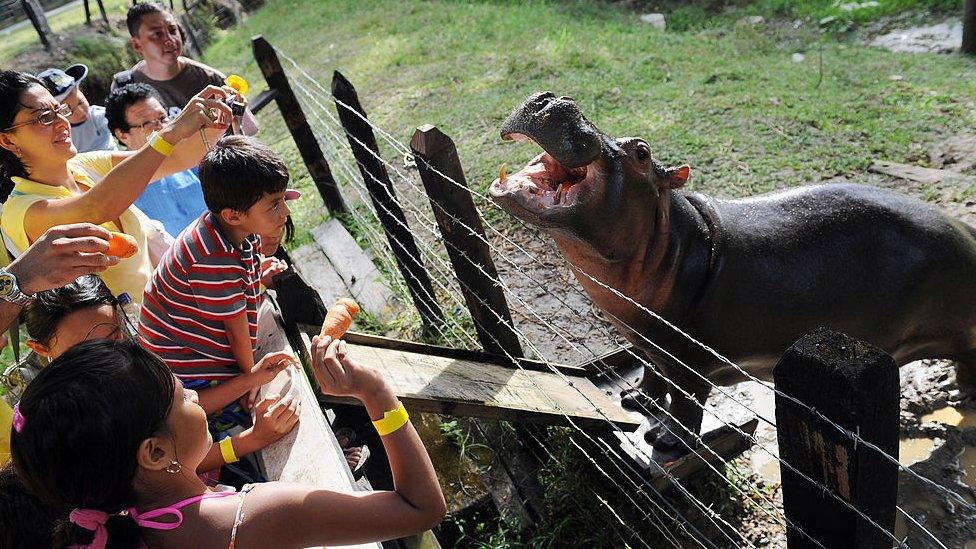
Most Colombians are against killing the "cocaine hippos", like Vanesa, seen here in 2009
Hippos are also dangerous, and they frequently appear on lists of the world's deadliest animals. In 2016 the BBC reported that their attacks kill at least 500 people a year in Africa.
There have been no fatalities in Colombia, but last May local media reported that a farm worker was seriously injured by a hippo in a town near Hacienda Napoles.
Still, there was a massive public outcry when Colombian Army soldiers gunned down the hippo Pepe in 2009, after it was deemed a threat to local communities. It was enough to lead authorities to make hippos legally protected, which is an obstacle to any plans to cull them.
David Echeverri, a biologist working for the Colombian environmental agency Conare, admits that public opinion is hampering efforts. He told the BBC that a cull had already been discussed but that killing hippos was unlikely to happen soon.
"It is a topic that polarises people," he said, "which is why we have to keep looking at other solutions."

You may also be interested in:
'How I found out Pablo Escobar was my father'

Related topics
- Published30 November 2015
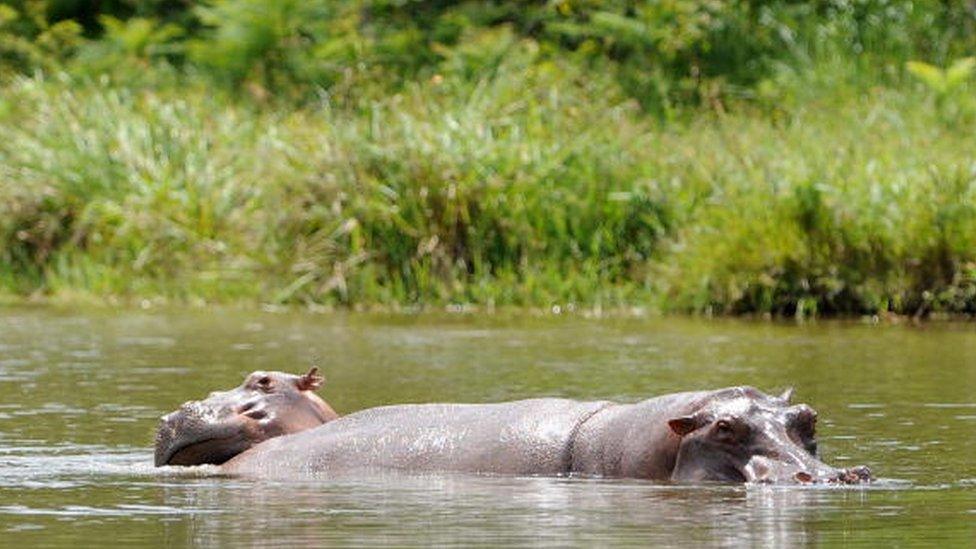
- Published27 November 2014
